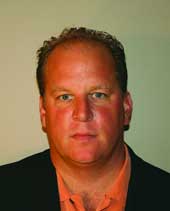Bright idea

A Web-streaming tool gets top billing in Wisconsin.
At the height of the anthrax attacks that panicked the nation in 2001, the thirst for information about biological agents reached almost hysterical levels among the media, health officials and the public.In the aftermath, concerns about similar attacks gripped communities from coast to coast.In 2003, for example, Wisconsin faced a similar incident."There were a couple of episodes in the state where monkey pox was identified," said Brian Wagner with Wisconsin Health and Family Services Department's Office of Strategic Finance. "Monkey pox was, and is, very rare, so there was some fear initially that it was related to smallpox."In an effort to alleviate people's fears and share information about the situation, state health officials decided to hold a press conference.Because of the wild nature of speculation and anticipation of this press event, health officials decided at the time that it would be nice to broadcast via streaming media, Wagner said.So state officials used a software and hardware solution called Mediasiteto broadcast the press conference.The decision to present the event via the Web turned out to be wildly successful, Wagner said. The press conference was picked up by news organizations and other groups worldwide.Because that pilot project worked so well, state officials now use the Mediasite system to share, integrate and archive almost every aspect of business the state conducts. Monthly senior management meetings are distributed using the system. The governor's office uses it to share speeches and other information. And it is used for professional training, such as for continuing medical education credits that social workers, nurses and physicians need to earn.Mediasite is a mixture of hardware and software designed to capture rich media such as video, audio and digital content, said Darrin Coulson, chief operating officer at Madison, Wis.-based Sonic Foundry Inc., maker of Mediasite. It automatically captures, assembles and distributes that content.Mediasite is integrated into conference rooms or smart rooms equipped with several communication technologies."Our product takes all the leads and feeds of everything you're building into a smart room ? video conferencing, cameras, projectors, videotape players, tablet PCs, Macintoshes ? anything you're going to use in the room to present from," Coulson said.Mediasite takes those feeds and automatically builds an archived library of content. The ever-growing library is searchable, indexed and secure, and its content can be streamed out live or on demand.Mediasite's software automatically analyzes the audio stream with phonetic recognition technology, and it uses optical character recognition to analyze every PowerPoint slide, grabbing every word and automatically indexing that. No pre-production or post-production has to be done to the content; it's all done automatically.Someone making a presentation can simply walk into a room and plug in the device necessary for a presentation. Regardless of whether the presenter has the materials stored on a laptop computer or mentally, Mediasite can capture that, stream it live or build a library with it, Coulson said."There's no need for the presenter to learn anything or to send content in, like PowerPoint slides, ahead of time," he said.The server component of Mediasite assembles the content, enables it to stream and integrates into an organization's security model. Organization leaders can apply rules to the content and decide who can see it and when they can see it. It provides reporting features that identify who watched content, when they watched it and how long they watched it. Although no post-production is necessary, edits to content can be made as needed.The product must run on a Windows Media Server. Sonic Foundry offers a hosting option, or organizations can choose to run it in-house. Wisconsin, for example, had it hosted for about a year and now runs the technology itself.Wisconsin now has the staff and server capacity and storage capacity to run the communication system, Coulson said. "They use this for all their training, to build their libraries of content to do their training, and for emergency communications from the leaders out to the public," he said.Wisconsin officials find the technology is well-suited for amateur-level technicians to operate, so they've wrapped it around many of the state's training and communications efforts.The state's chief medical officer, for example, has monthly meetings with all the county-level health officers in the state. In the area of public health, Wisconsin operates in a home rule state format, which means the counties have a lot of autonomy to make local decisions with regard to how policies are implemented. The state often serves as a support mechanism for them, helping them make decisions."So it is very much a negotiation process between the state and counties in regards to furthering the public health cause of the state," Wagner said."The chief medical officer has monthly Webcasts with the local officers to let them know kind of the general direction of what's being looked at with regards to leadership in the state of Wisconsin with public health," Wagner said. "She also solicits their feedback with regards to what's working locally, and negotiates and collaborates on the state and local goals."

Staff writer Doug Beizer can be reached at dbeizer@1105govinfo.com.

"There's no need for the presenter to learn anything or to send content in, like PowerPoint slides, ahead of time." ? Darrin Coulson, Sonic Foundry
Staff writer Doug Beizer can be reached at dbeizer@1105govinfo.com.
NEXT STORY: One for the ages